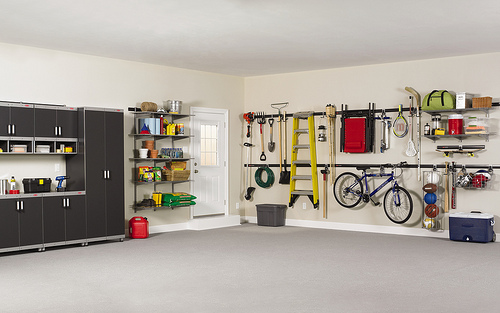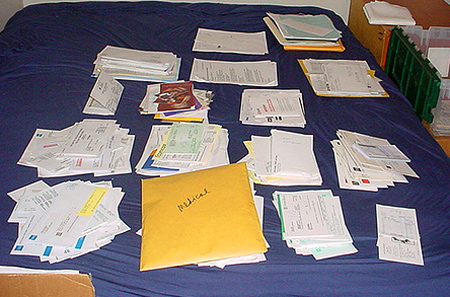
A reader got in touch with me the other day asking about where to start with task management. While I’ve written a number of articles about different kinds of organization, I don’t believe that I’ve ever tackled the question from the basic question of where to get started with organization as a whole … so here that article is.
Five kinds of organization
At least five kinds of organization can demand our attention, and it’s helpful to separate them in our minds, because each one requires a slightly different approach. Those kinds are:
- tasks (anything that needs to be dealt with, from a quick decision to a massive project)
- paper (including mail, reference materials, the kids’ schoolwork, bills, receipts …)
- physical clutter
- information (I won’t go into this in any detail in this article, but see “Eight Ways to Organize Information and Ideas“)
Useful principles of organization
Some approaches to organization are much more successful and rewarding than others. The following ideas can help move things along:
- Have a clear system for decisions – It’s much easier to get through a pile or list of items if you have a strict and clear way to deal with them. A detailed working example: if you’re dealing with a stack of papers (or even boxes upon boxes of papers), take a look at the system outlined in “The 8 Things You Can Do With a Piece of Paper.” Process one item, then go back to the top and repeat for the next one.
- Don’t get bogged down when planning – One of the difficulties with, prioritizing a task list or clearing out an e-mail box, for instance, is that it’s easy to get bogged down trying to do one specific item instead of finishing the task of organizing all the items. Except for one situation I’m about to mention, it tends to work best to only organize when organizing–not getting sidetracked onto one specific item, no matter how appealing or pressing that item might be (short of an emergency).
- Do very quick things right away – Whenever we’re organizing and we come across a form that can be filled out and readied for the mailbox in a few minutes, or a task that will take a very short time to complete, or an e-mail that can be put to rest with a two-sentence response, taking care of that task immediately shortens the to-do list or stack of papers or list of e-mails to handle, and it saves time having to organize and review the item. This is the exception to not doing tasks while planning, because these short tasks won’t bog things down.
- Categorize & prioritize – It’s great to get down a list of everything that needs to be done, but if we don’t prioritize tasks then we’ll end up doing whatever seems most appealing, easiest, or most obvious instead of whatever will make the greatest positive impact. Categories make it easier to attend to one kind of thing at a time, and priorities are essential for repeatedly answering the question “What’s the best thing for me to be doing right now?”
- Review regularly – When organizing tasks and e-mail, regularly going over the lists is an important part of organization in order to remove things that have been completed, bump up the priority of items that have become more urgent, recategorize, and revisit pending items that have gotten stalled. Along with the obvious benefits of this practice, doing regular reviews also helps us have confidence in our own organizational systems. If we just sweep things into categories and never look at them again, then we’ll our system will start failing this, and knowing this, we’ll be reluctant to put important items into it. As soon as we start keeping things out of an organizational system, that system has failed: it then needs to be handled differently, re-energized, or revamped.
- Organize items once – When an item comes into an organizational system, it’s important to make a decision where to put it then and there. If we set things aside to consider later, then later we’ll just be faced with the exact same choice. By making the choice with each item as it comes up, we can make clear forward progress.
- All tasks should go to one place – It’s easy for tasks to start growing, like weeds, in many different places. Apart from very basic separations like “work tasks” and “home tasks,” though, that way lies confusion and failure. If I have a computerized task list, a handwritten list for some other tasks, a file on my computer for some other tasks, a few sticky notes, and some e-mails in my inbox that I want to use as reminders, then I have no way to look at all of my tasks together and prioritize them, which means that my system can’t tell me the one thing I need to do next–and a good organizational system can always answer the question “What should I do next?”
In a follow-up post, I’ll provide links to some of the most useful organizational articles on this site and talk about the one book I would recommend above all others for getting organized.
Photo by Rubbermaid Products




